Key takeaways
- The Marshall Plan was initiated by the U.S. after World War II to aid economic recovery in Europe and counter Soviet influence.
- Key objectives included rebuilding infrastructure, fostering political stability, and encouraging collaboration among European nations.
- The Plan significantly transformed European economies, instilled hope, and established foundations for future alliances like NATO and the EU.
- It served as a model for combining economic aid with strategic diplomacy, highlighting the importance of cooperation in overcoming global challenges today.
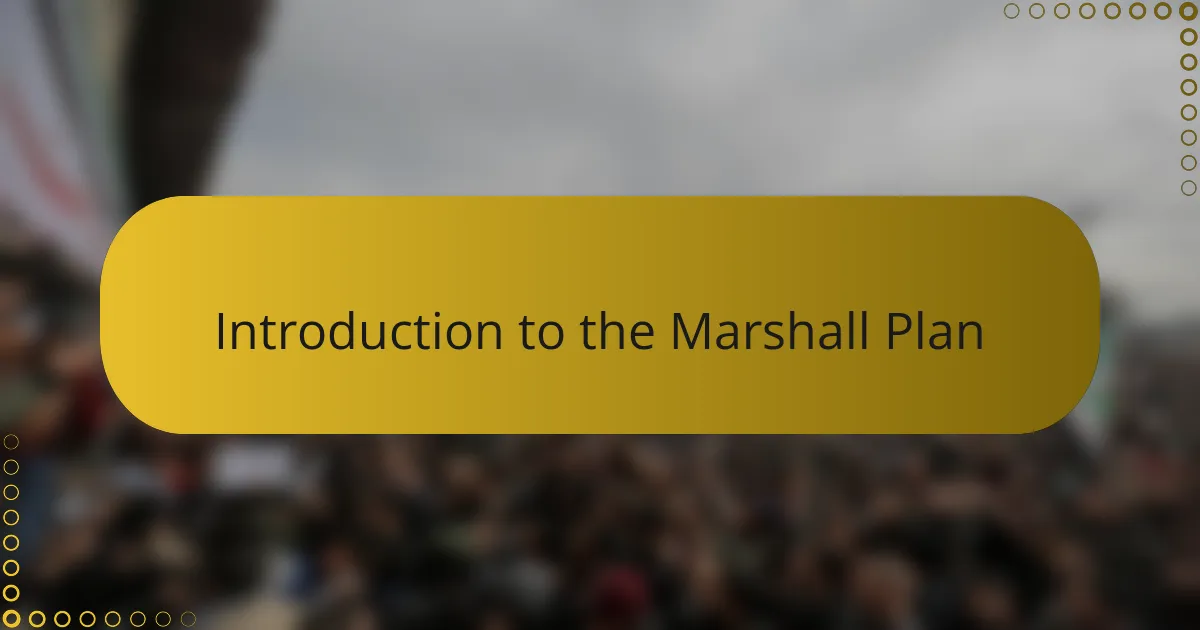
Introduction to the Marshall Plan
The Marshall Plan was an ambitious effort launched by the United States after World War II to rebuild war-torn Europe. I find it fascinating how this massive aid program not only helped restore economies but also shaped political alliances during a fragile time. Have you ever wondered how a single policy could influence both recovery and international relations?
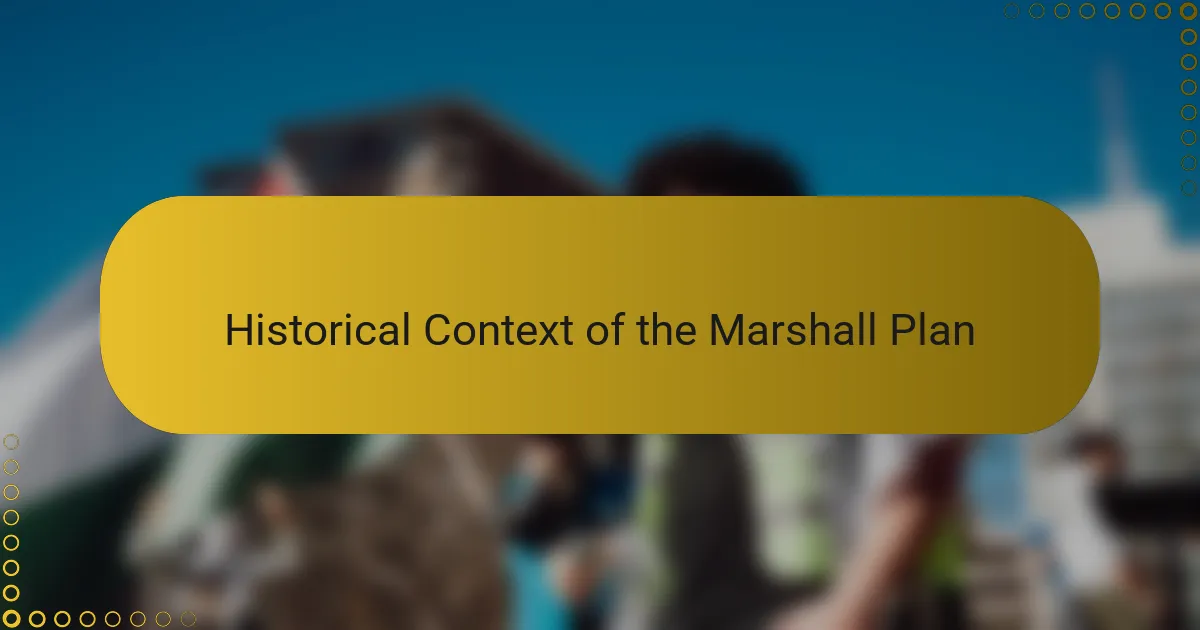
Historical Context of the Marshall Plan
Right after World War II, Europe was in ruins—factories destroyed, cities flattened, and economies shattered. I remember reading about how desperation was everywhere, with people struggling to find basic necessities. It’s hard not to imagine the sheer scale of hope pinned on a plan like this amid such devastation.
At that time, the fear of Soviet expansion was palpable. The Marshall Plan didn’t just address economic recovery; it was also a strategic move to curb communist influence. Thinking about it, I can’t help but wonder how different history might have been if this political backdrop wasn’t so intense.
What strikes me is how the U.S. took such a bold step, choosing to invest so heavily in the recovery of former enemies. It highlights a level of forward-thinking and diplomacy that’s rare today. Have you ever considered how this generosity reshaped not only Europe but also the global order?
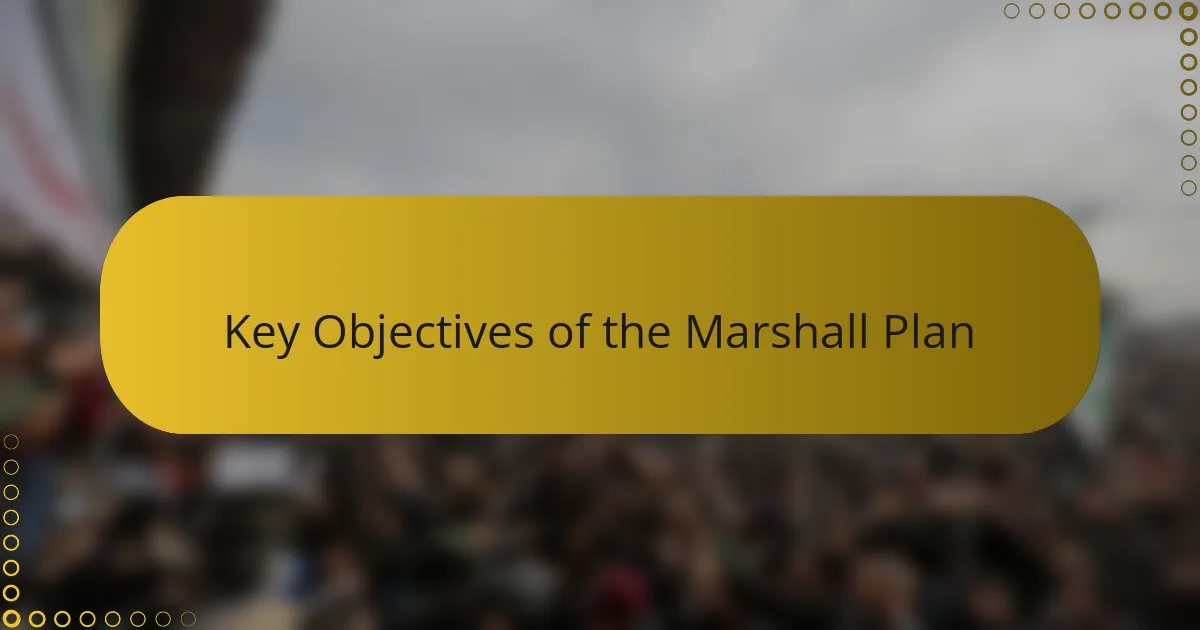
Key Objectives of the Marshall Plan
The primary goal of the Marshall Plan was clear to me: it aimed to jumpstart economic recovery in Europe by providing financial aid to rebuild infrastructure, industry, and agriculture. I’ve always thought about how crucial it was to get factories running and food production back on track to prevent widespread hunger and instability. Without these immediate actions, I wonder how long Europe’s recovery might have taken.
Another key objective was fostering political stability by reducing the appeal of communism. From my perspective, this wasn’t just about economics—it was a strategic effort to support democratic governments and create a buffer against Soviet influence. It makes me think about how economics and politics often intertwine, especially in tumultuous times.
What really stands out to me is the plan’s vision of cooperation among European nations. The U.S. encouraged countries to work together, which, in my opinion, laid the groundwork for future alliances like NATO and the European Union. Could a divided approach have succeeded in such a fragile post-war environment? I tend to believe not.
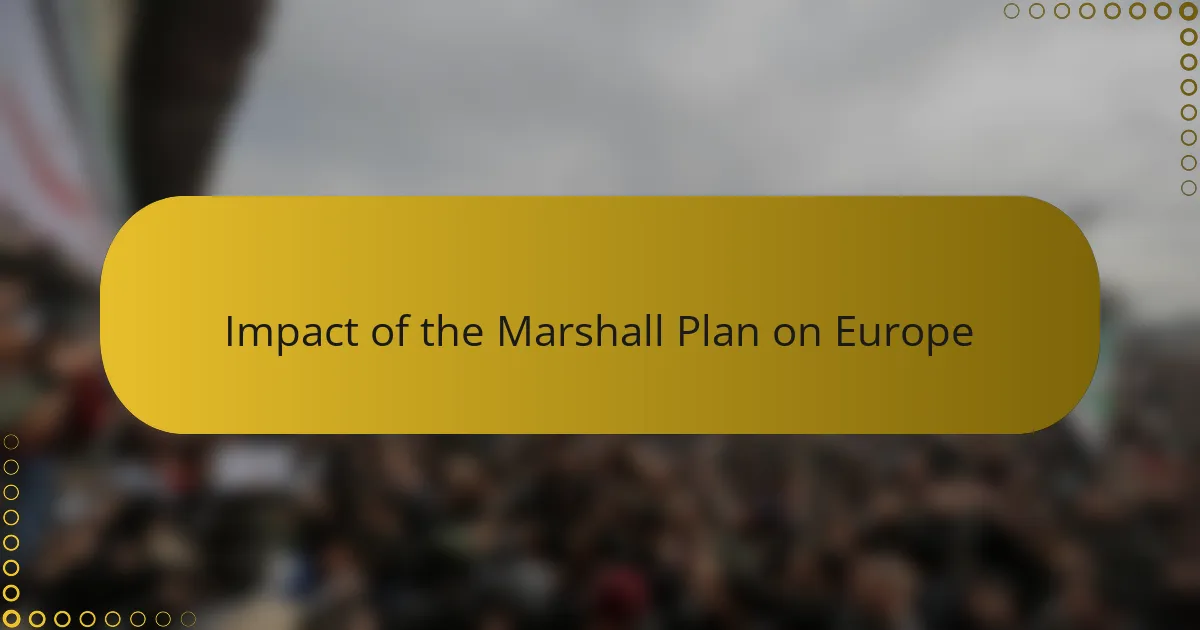
Impact of the Marshall Plan on Europe
The impact of the Marshall Plan on Europe was nothing short of transformative. I’ve often thought about the way it breathed life back into devastated economies, turning rubble into bustling factories and fertile fields within just a few years. Can you imagine how different the continent might look today without that crucial injection of aid?
What really strikes me is how the plan went beyond just dollars and cents—it restored confidence. People were able to see a future beyond hardship, which, to me, is just as important as economic recovery itself. This sense of hope seemed to fuel a broader revival, both socially and politically.
Another point I’ve considered is how the Marshall Plan helped knit European countries closer through collaboration. This wasn’t simply charity; it was a strategic push toward unity that, in my view, set the stage for lasting peace and alliances. Have you ever thought about how economic cooperation can be the seed for political stability? I believe the Marshall Plan showed exactly that.
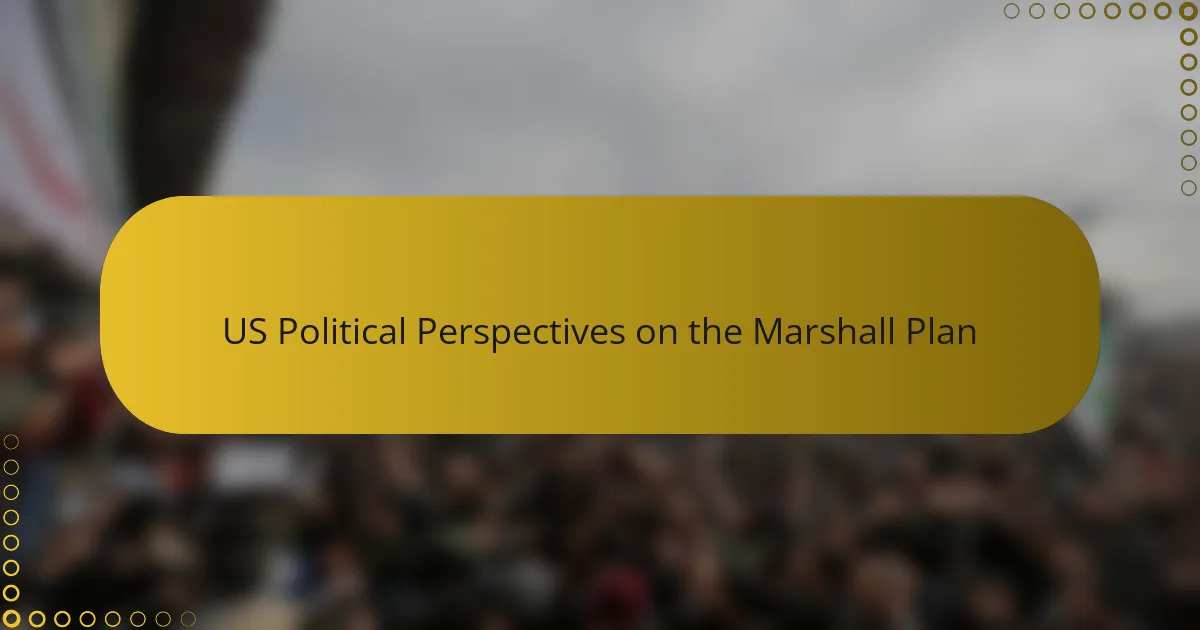
US Political Perspectives on the Marshall Plan
The Marshall Plan sparked diverse opinions within U.S. political circles, and from what I’ve gathered, it was both praised and scrutinized heavily. I’ve read accounts of politicians who saw the plan as a moral obligation—and a strategic necessity—to prevent economic collapse and counter Soviet influence. But I also came across voices questioning the cost and long-term implications, which makes me wonder how they balanced idealism with pragmatism.
What intrigues me most is how bipartisan support eventually coalesced around the plan, despite initial reservations. It feels like a rare moment when politics took a backseat to a larger vision of global stability. Have you ever considered how unusual it is today for policymakers to unite so firmly behind such a massive foreign aid initiative?
At the same time, I think about the domestic political debates that surrounded the aid—concerns over American taxpayers footing the bill versus the urgency to act internationally. From my perspective, these discussions highlight the tensions that often accompany U.S. foreign policy decisions, reminding me how complex it is to balance national interests with global responsibilities.
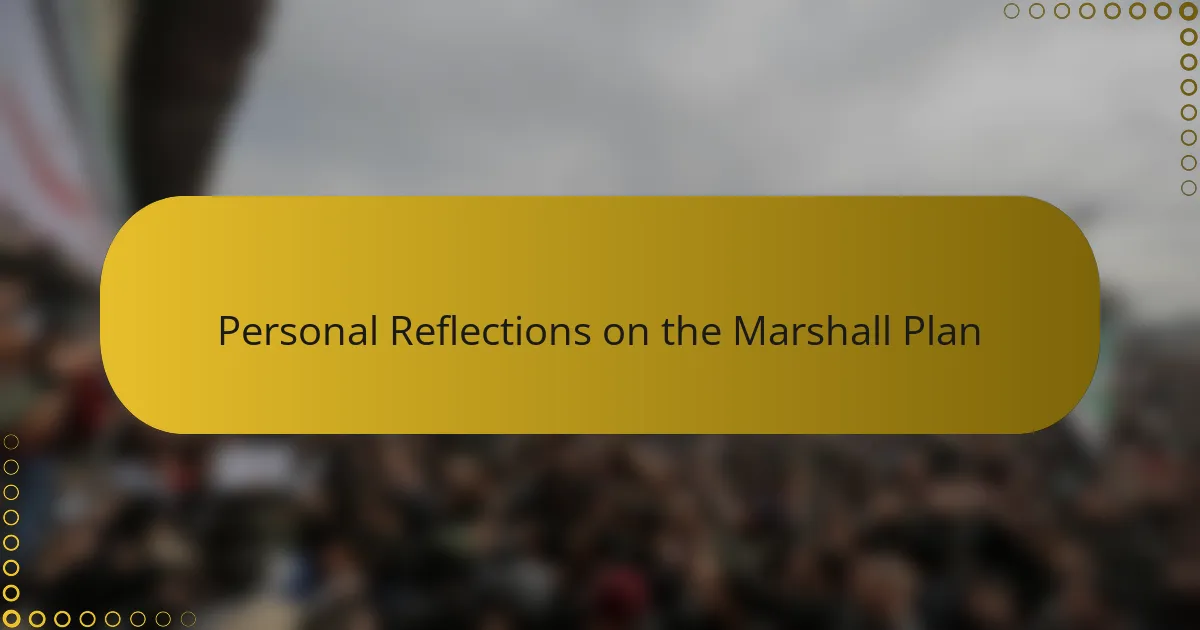
Personal Reflections on the Marshall Plan
I’ve often reflected on how the Marshall Plan represents a remarkable blend of pragmatism and idealism. It wasn’t just about pouring money into broken economies; to me, it was a deeply human effort to restore dignity and hope after unimaginable suffering. Do you ever think about how such generosity might feel on the receiving end—like a lifeline thrown at a moment when giving up seemed easier?
What I find emotionally powerful is the boldness behind the decision to help former adversaries rebuild. That kind of forward-looking compassion speaks volumes about the values the U.S. was trying to uphold. Sometimes I wonder if today’s political climate could produce such a visionary commitment or if short-term gains would overshadow long-term peace.
Finally, the Marshall Plan feels to me like a lesson in interconnectedness. It wasn’t simply an economic rescue; it was about knitting together a shattered continent, reminding us that cooperation can triumph over division. Doesn’t that idea still resonate deeply in an increasingly fragmented world? I believe it does, perhaps now more than ever.
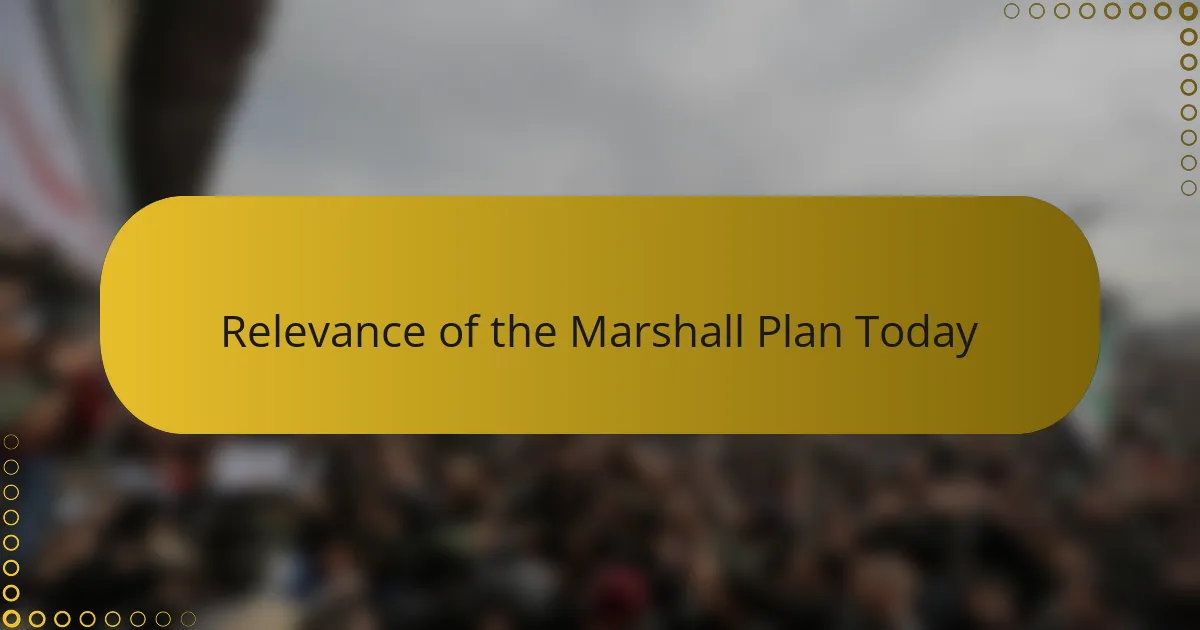
Relevance of the Marshall Plan Today
When I think about the Marshall Plan’s relevance today, I can’t help but see echoes in current global challenges. The way it combined economic aid with strategic diplomacy seems like a blueprint still worth studying. Have you noticed how crises now demand not just money, but trust and cooperation across borders?
From my perspective, the Marshall Plan reminds us that reconstruction is as much about rebuilding relationships as rebuilding infrastructure. It’s remarkable how a focused effort in the past reshaped an entire region’s future—could we apply the same mindset to today’s strained international alliances?
What strikes me most is how the spirit of the Marshall Plan could inspire contemporary policies. Amid rising protectionism and division, isn’t it crucial to remember that long-term peace and stability often need bold, collective investment? I wonder if our leaders today have the will to embrace such a vision once again.